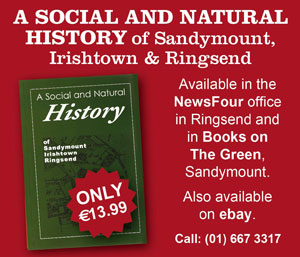
Photo of Maud Gonne courtesy of Wiki Commons.
By David Prendeville
Sandymount local Anthony J. Jordan’s new book Maud Gonne’s Men is an insightful and precisely written piece. It gives an account of the various relationships Maud Gonne had with men over her life, from Thomas Gonne, her father, to French politician and journalist to Lucien Millevoye to WB Yeats and John MacBride, who she viewed as Ireland itself, to James Joyce and her second son Sean MacBride, who she viewed as a reincarnation of her deceased baby, George, who she had with Millevoye.
Jordan uses this methodology to paint a fascinating picture of Maud Gonne, as well as illustrating how she and those she interacted with shaped history in multiple ways.
An excellent chapter in the book examines Maud Gonne’s divorce case with John MacBride. Quotes from an interview she gave the New York Evening World underline her feminist credentials: “If a woman has really something worthwhile to do in the world, I say unhesitatingly marriage is a deplorable step. If she is an ordinary, commonplace woman, then she might as well marry as not. No matter how loving her husband is when he first marries, a man is sure to become jealous and sarcastic about his wife’s career. In the end, he is likely to make his wife’s life a living hell.”
Further interest is derived from how Maud Gonne’s second son Sean MacBride facilitated the repatriation of WB Yeats but opposed that of James Joyce. While MacBride had a close relationship with Yeats, he disliked Joyce, feeling he had treated his mother awfully.
With regard to Yeats, Jordan has to put the record straight somewhat on theories that have been accredited to him. The chapter highlights the uncertainty surrounding whose remains lay in the grave of the great Irish poet. There have been suggestions that it was, in fact, those of Alfred Hollis, an Englishman who died around the same time.
Hollis wore a steel corset for spinal tuberculosis. Rebouillat, the forensic doctor in Roquebrune, where Yeats was initially buried, based his restoration of Yeat’s skeleton on the presence of a corset. Hollis’s family were among those who claim it is Hollis and not Yeats.
Jordan cites his reference to this in his biography on Yeats which led to people accusing him of trying to create this conspiracy. Jordan succinctly evidences how it is not him who has created this theory, rather such suggestions can be seen to arise from documentation of the time. His deftness and the emphasis on artefact and evidence is clear to be seen throughout this fine book.



